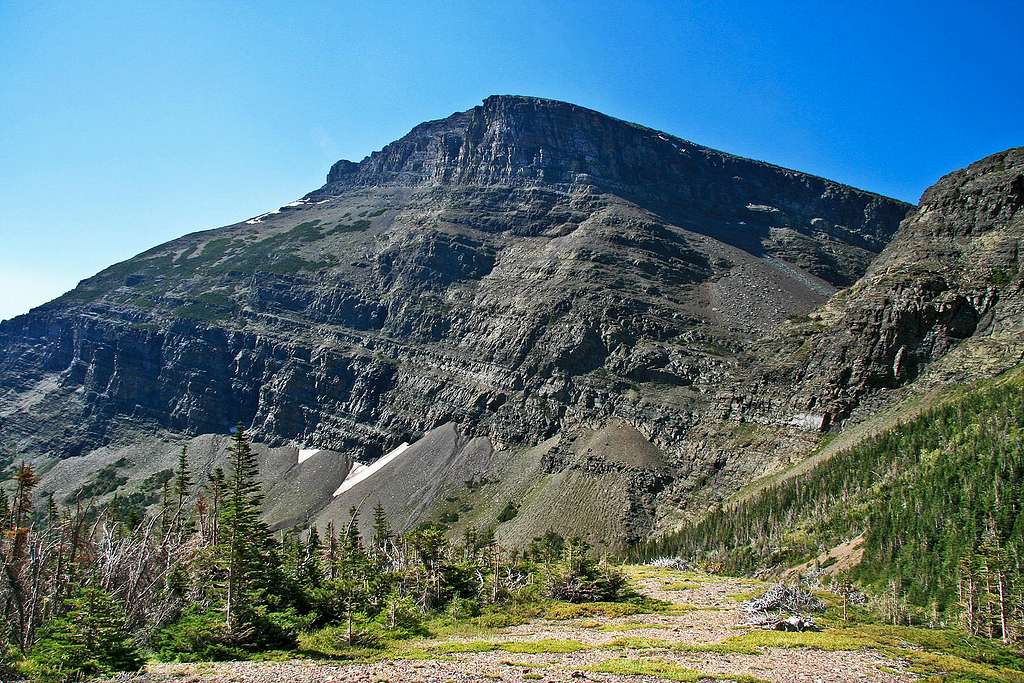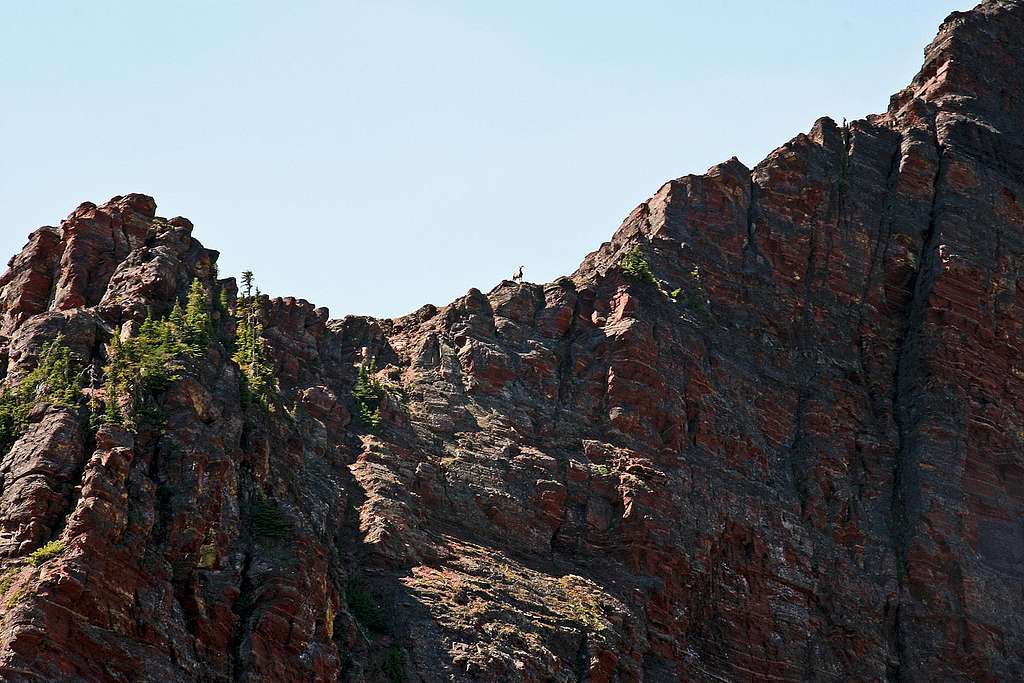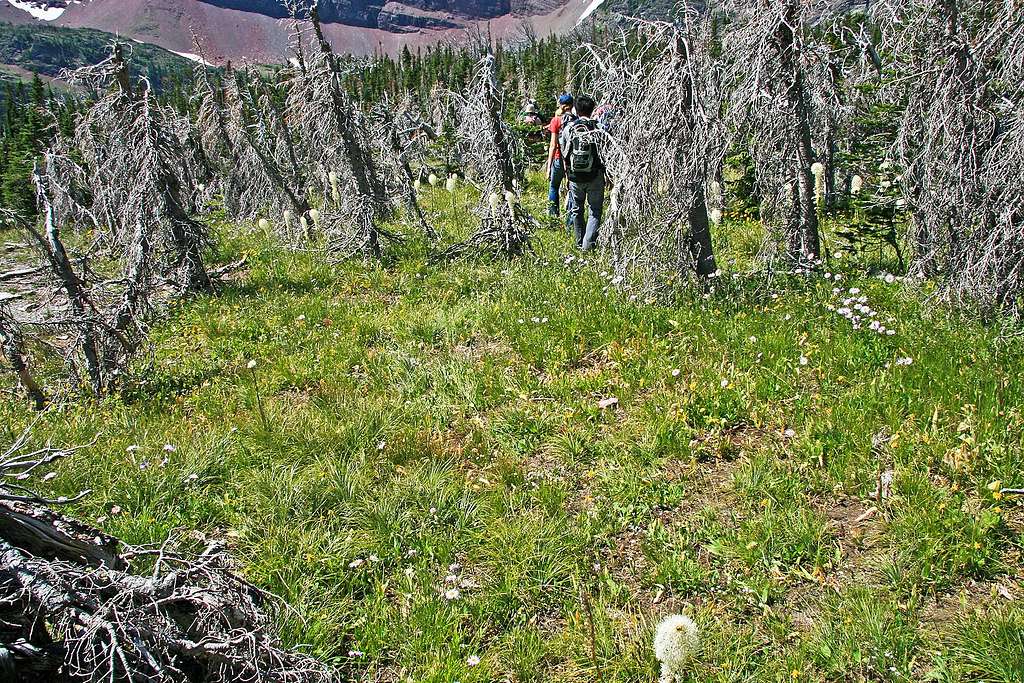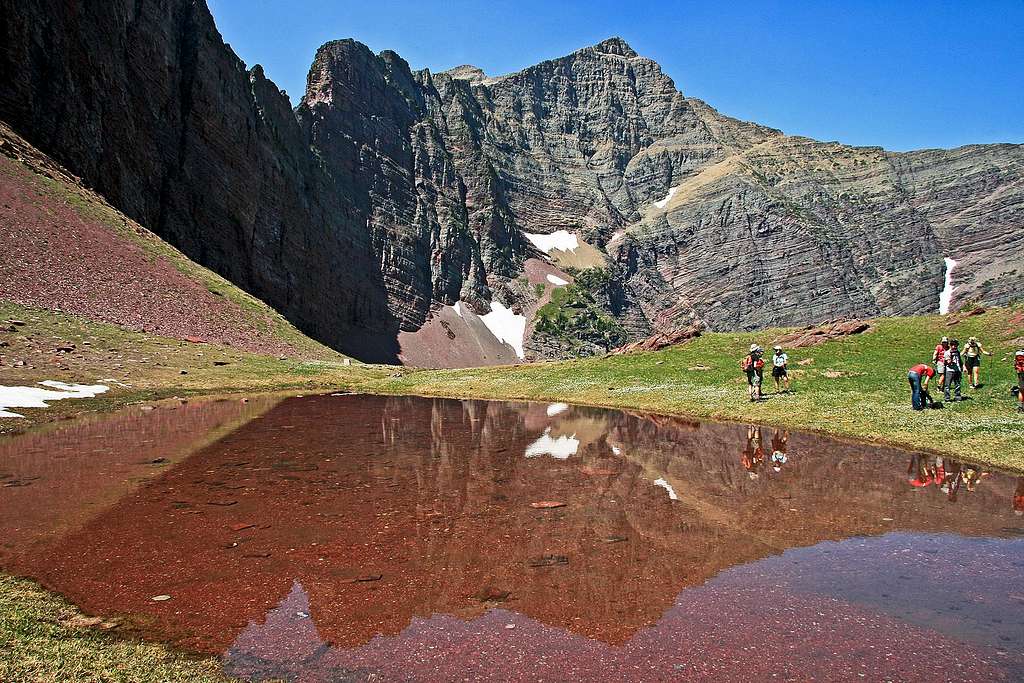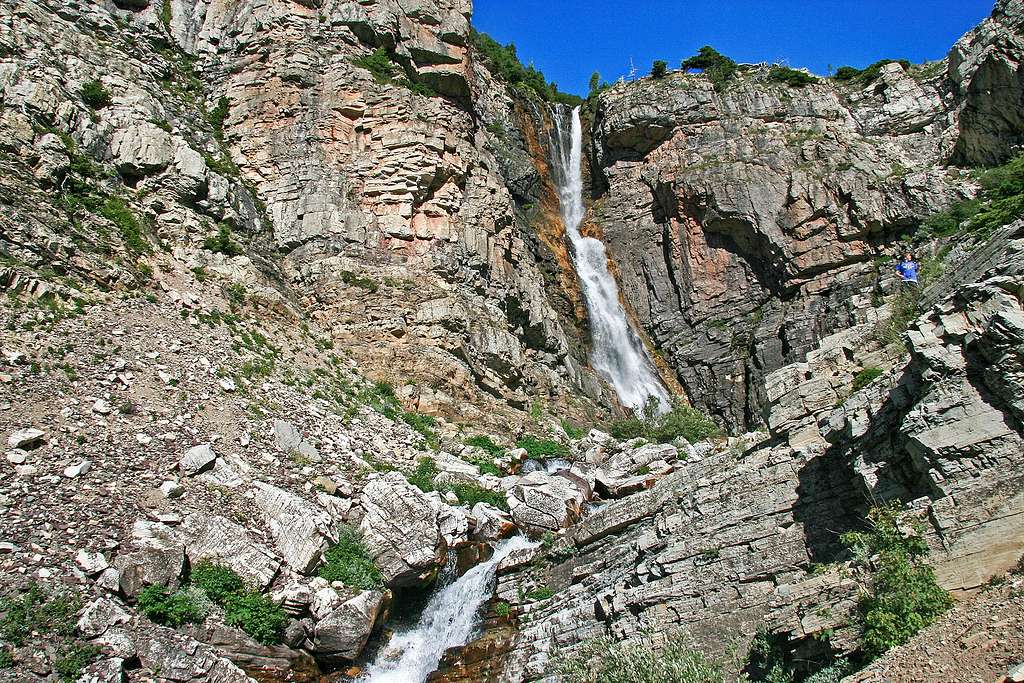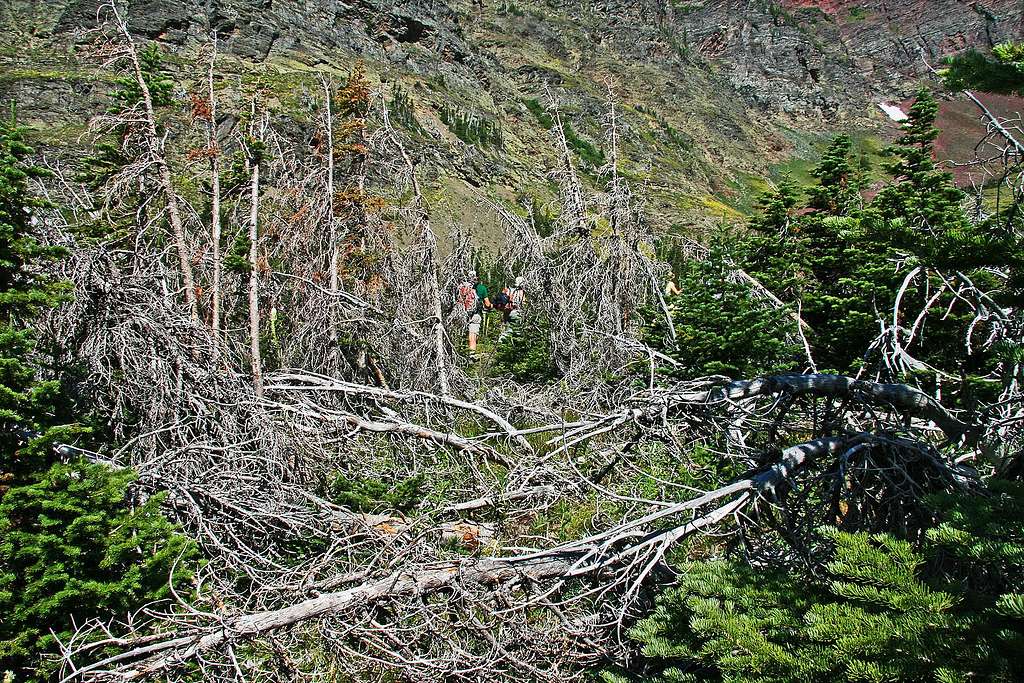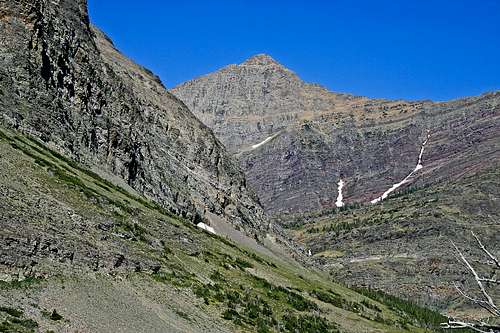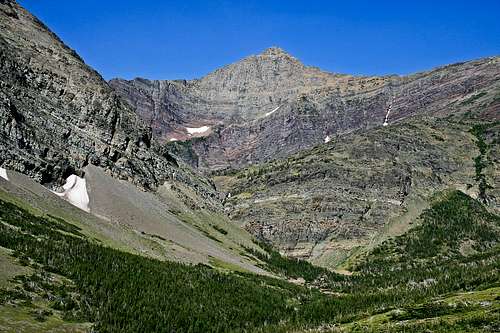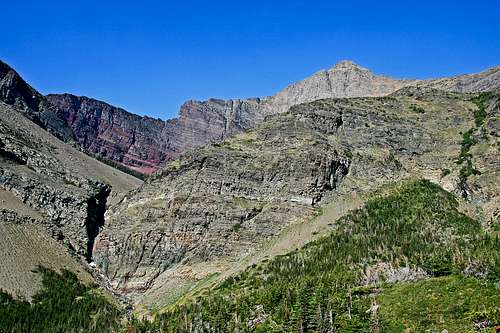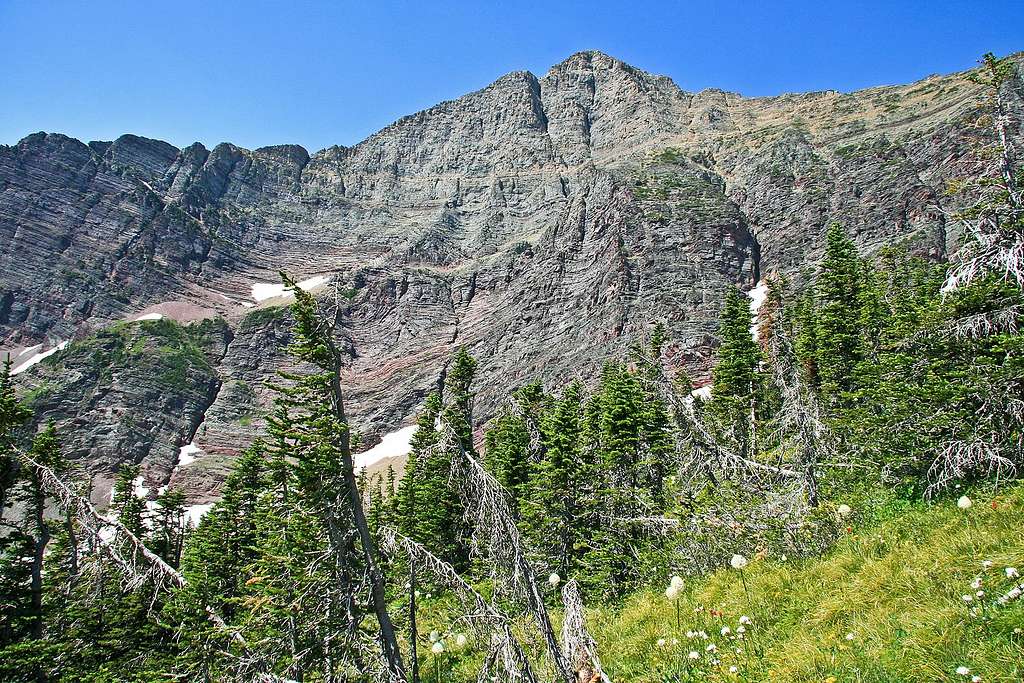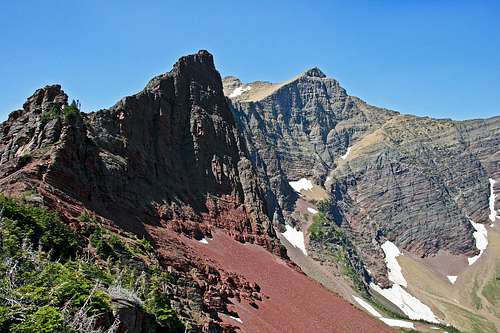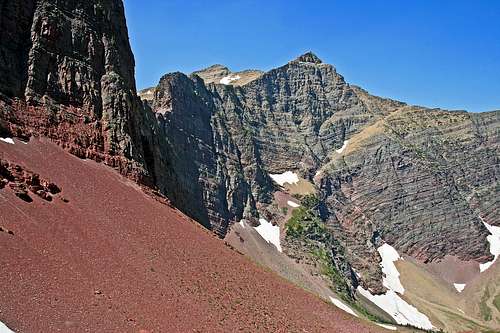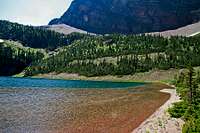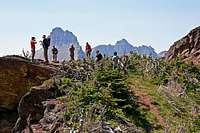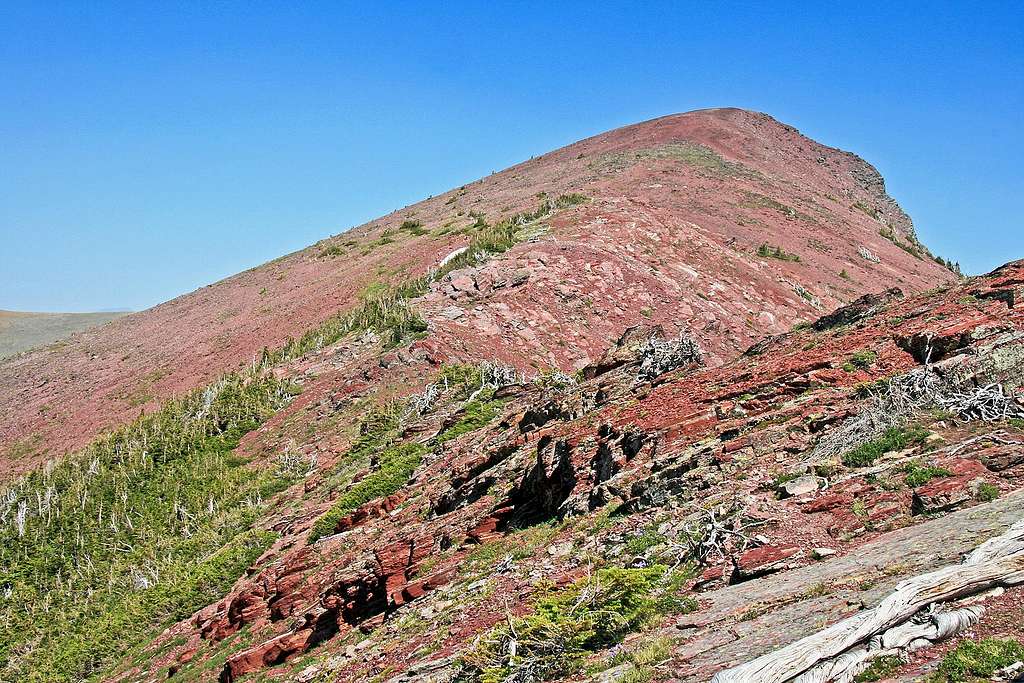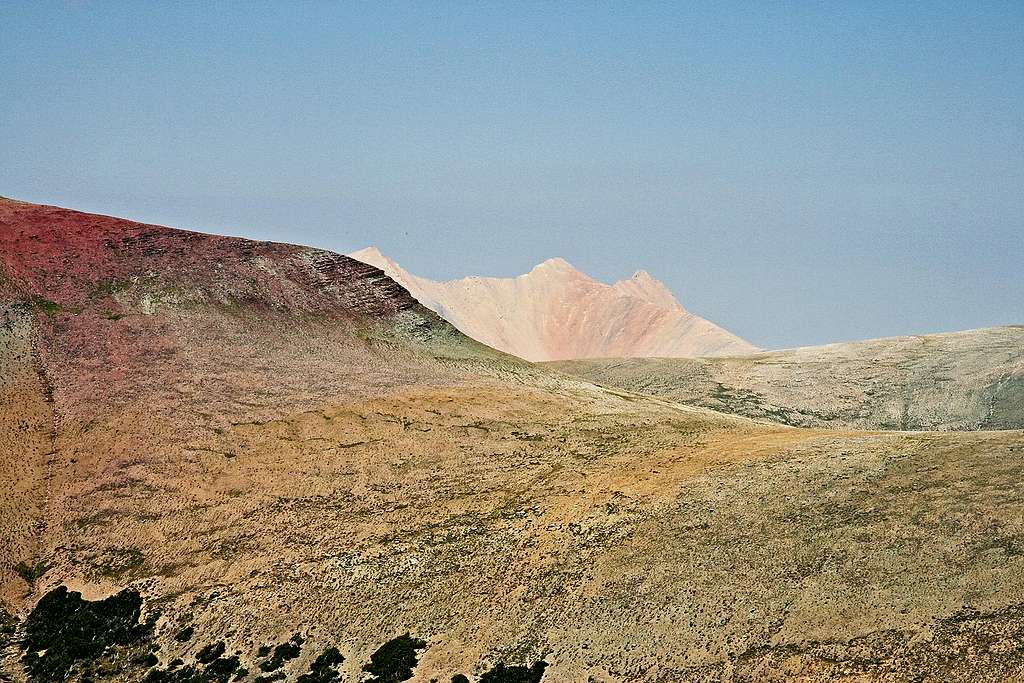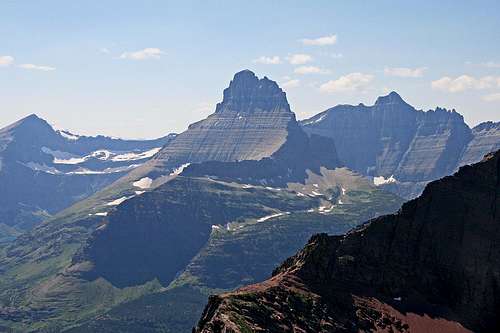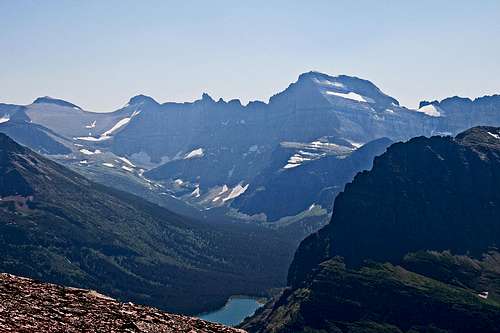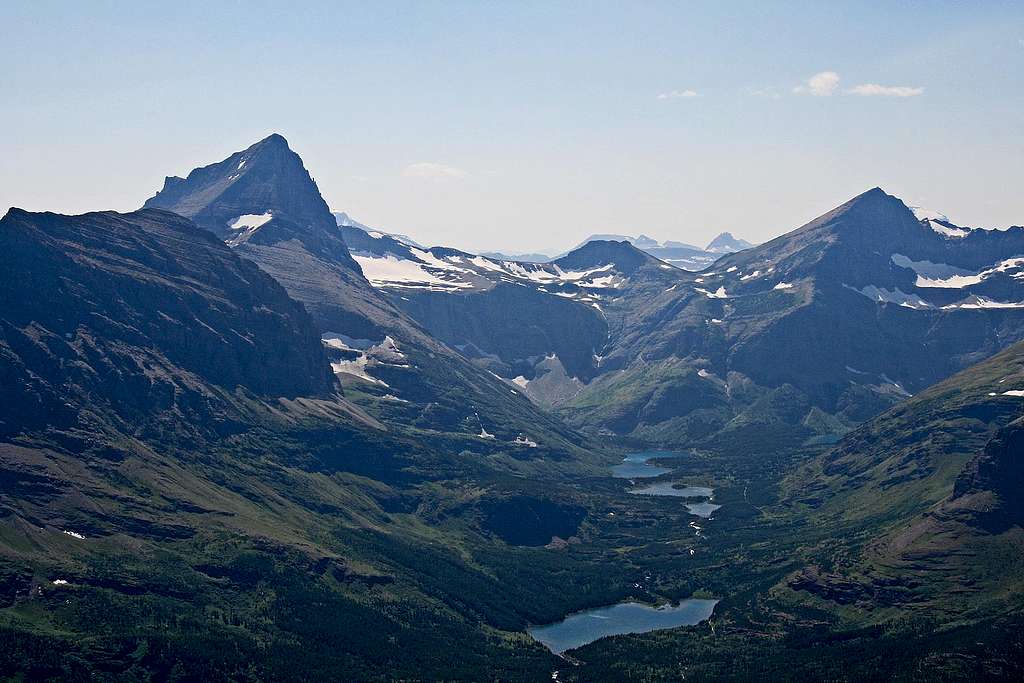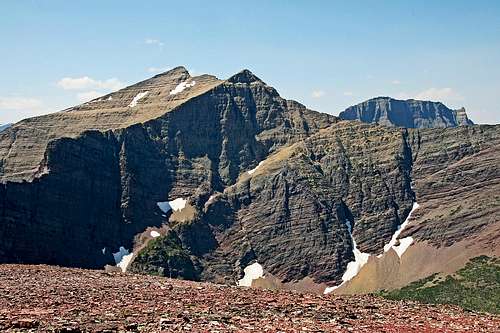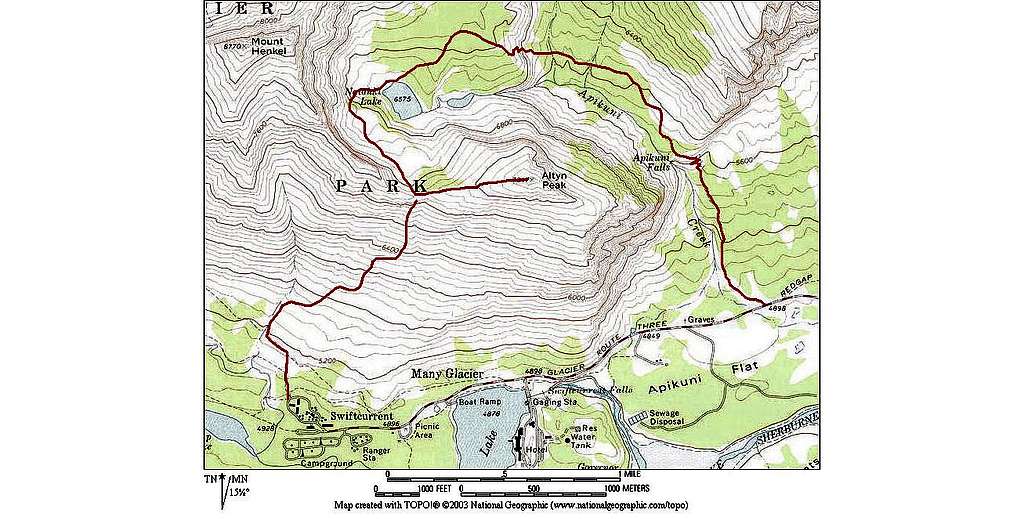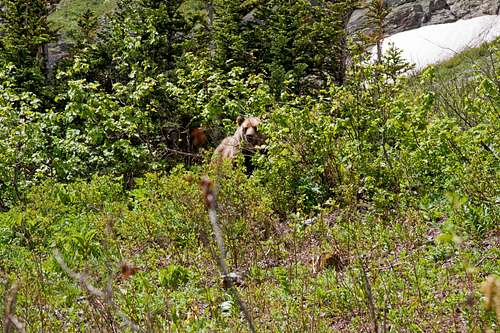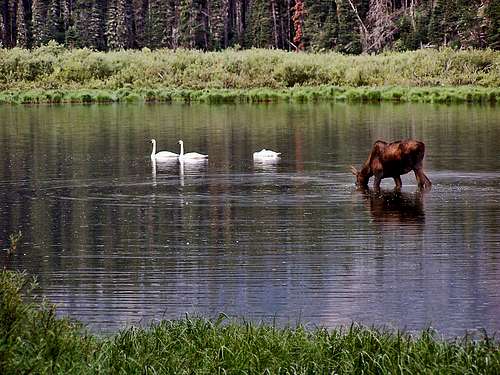-
 19092 Hits
19092 Hits
-
 88.19% Score
88.19% Score
-
 26 Votes
26 Votes
|
|
Mountain/Rock |
|---|---|
|
|
48.81330°N / 113.6562°W |
|
|
Hiking, Mountaineering, Scrambling |
|
|
Spring, Summer, Fall |
|
|
7947 ft / 2422 m |
|
|
A CLIMB TO SAVOROn this summer day Altyn Peak was different, standing out from the rugged norm in a manner quite memorable. Perhaps it was the GNP weather, a special served up warm and sunny, or maybe the green so bright it hurt your eyes did the trick. Or the flowers, forest, and meadows (and soaking one's feet in Natahki Lake certainly didn't hurt!), or possibly the fact that following all the days of summer's steepness and length, Altyn just seemed to be reaching out—an encompassing welcome of the best kind. So here is a page of pleasant and gentle memory. Of course there is drama, that in the nearness of Mount Henkel, and (of course) there are the forever-in-GNP summit views, thrilling even through too much smoke. But mostly it was a relaxing mountain day engendering fond warmth of memory, the sort of thing holding up well through those long dark months looming (all too frequently) on the horizon, when Glacier is more imagined than experienced.
similarities to such...and they were present in abundance.
TO CLIMB AN EMBRACING MOUNTAIN
It is a friendly thing, and within its slightly more than 3,000' of relatively steady and moderate elevation gain rising along a bit more than 4 miles from trailhead to summit, encompasses the likes of Apikuni Falls, meadows, forest, flowers, and easily surmounted cliffs (really!—in all honesty, nothing to fret over). Then, topping it all off is Natahki lake, which, with its grass-lined shore comes across as neither more nor less than an alpine park by which to lounge, have a picnic, soak your feet, and gaze at both the summit—now not much more than an hour away—and the impressive, not often seen east face of Mount Henkel (most definitely substantially closer and more intimidating and interesting than Altyn's gentle high point). Yes, this is a mountain which can be done quickly, but...if blazing through the wild is your thing, there are better choices easily located; the climbing of Altyn Peak is through a place tailor-made to enjoy the easy, gentler side of the mountain world. The route starts southeast of the peak, wrapping around as it climbs, enough so that ascending the ridge for the final push to the summit actually comes from the north, with the last 600 feet elevation gain up the ridge being almost directly from the west. The trailhead is well marked, although—since it is typical of GNP that nothing but goat and game trails (if that) guide the way up these mountains—not with the words "Altyn Peak." Steering you in the right direction is a sign about 2 miles from the Swiftcurrent Campground and village area, readily seen on the road's north side, with the designation "Poia Lake." There is a small parking area, and signs directing the way not only to the aforementioned Poia Lake, but also to other destinations. One of these signs is badly worn [at least it was this way when we were there, July, 2009], but has barely-readable wording (see picture) showing the way to Apikuni Falls. With the jaunt to those nice falls you are on your way. (*Not to worry: the "...quite unusual characteristic..." defining this outing awaits. But the summit comes first.)
HENKEL INTERLUDE
A VISIT WITH ALTYN'S CLOSEST NEIGHBOR
There is nothing difficult or dramatic in the climbing of Altyn Peak (well, on a nice day, anyway—which just coincidentally was presented to us in abundance), and the summit itself is mostly a geologically unimpressive rounded dome. And yet, memories belie there was nothing to this day outside a gentle mountain climbing experience, topped off (naturally) with stunning vistas from the summit. There was indeed drama. Visual drama, the likes from which it is difficult to veer, the kind supplied in abundance by a growing nearness of something along the lines of 2000 feet of near-vertical carved upthrust. Visual stimulation supplied by the east face of joined-at-the-hip neighbor Mount Henkel. This day's outing was one of the summer's more memorable, and I'd recommend Altyn Peak to anyone.
THE CLIMB CONTINUES....
Altyn Peak is now perhaps only a bit more than an hour away as it dominates the view south of the lake, with the easy climb to the saddle quite obvious, and the equally easy, and visible, final 600 feet up the summit ridge providing, if any be needed, the impetus to successfully endthe climb. Reaching the saddle will involve crossing a couple snow fields, but they are not steep enough to require any kind of gear, and at least by late July may normally be skirted if desired (but do note that conditions always vary greatly from year to year; earlier in the summer, or following a heavy winter/late spring, the character and size of these snow crossings are substantially different). From lake to saddle to summit is an easy jaunt, withever-expanding views; the true summit of Mount Henkel finally becomes visible to the west, as do the always thrilling Mount Wilbur, Iceberg Peak, B-7 Pillar, Swiftcurrent Mountain, and Mount Grinnell, and to give a sense of perspective, upon reaching Altyn's summit the entire Many Glacier valley lies 3000' below, with such as Mounts Wynn and Gould, and Allen Mountain across the way. To the north is the large bulk of Apikuni Mountain, with one of the more intriguing and weird GNP peaks, Yellow Mountain, making its yellowish presence known as it rises above the Apikuni ridge line. And finally, upon reaching the summit, as a quite dramatic and unanticipated counterpoint to the ridge crest running north of Henkel, the top couple hundred feet of Crowfeet Mountain's 2000'+ sheer east face unexpectedly pops into view. A climb to savor, indeed! But of course, part of any climb is the descent, and this is where Altyn Peak takes a nice climb and makes it special. Rather than turning around and retracing the way back to the by now mentally distant Poia Lake sign, this mountain offers the opportunity of an absolutely wonderful scree descent into the Many Glacier Valley, which is 2500' below the saddle. It is relatively moderate in descent angle, making it just right to "ski" with your feet—and there are no usage restrictions in effect as a result of erosion. (Only one other time have I encountered its like, and that on a climb about twenty years ago of Colorado's Handies Peak—an equally wonderful descent which, if memory serves correctly, has been closed in the intervening years due to excessive foot traffic and erosion.) Getting off this peak is a marvel! Simply head down from the saddle (not the summit) until running out of scree, at which
VIEW FROM THE UPPER REACHES
Route Map and Link
good Google Earth photos of the route to Natahki Lake, which is really the far extent to which any kind of map is needed. The rest is quite visible, and easily done.
The Red Tape, Wildlife, & Cautions Section
GNP Road Information
Map of Waterton/Glacier International Peace Park When to Climb, & Climbing Considerations
Because of the nature of the rock, there are special considerations regarding climbing in Glacier National Park, and grading systems unique to the Park have been developed by both J. Gordon Edwards and the Glacier Mountaineering Society. Anyone doing more than just "trail" hiking in this part of the Rockies should read the excellent and important information put together by Fred and Moni Spicker. Much—if not most—of the rock in GNP is sedimentary and rotten, and you need to know about it: Glacier National Park Rock & Grading Systems. Camping
Current Conditions/Web CamsWeather page—an overview, plus current conditions and forecast This is the New NPS Web Cam Page.
External Links/Additional Information/Items of Related Interest
In TributeOn March 1, 2011, Vernon Garner, Saintgrizzly, left us after losing a bold, inspiring fight against pancreatic cancer. Or maybe he won, for he is at last free of his pain and has "shuffle[d] off this mortal coil."Vernon was an important contributor on SummitPost, but beyond merely making good, informative pages, he actually inspired many who read his work. No one put more work into his or her pages than Vernon did, and many of those pages, especially those related to Glacier National Park, the place he loved above all others, are works of art in both the writing and layout. More than one person has wanted to visit Glacier or go back to Glacier largely due to what he shared about that magnificent place. Many people on SP counted Vernon among their friends, and many more saw him as one of the best, one of those who exemplified the spirit of this site. He was one of the best of us, he will be missed, and he will not be forgotten. As a tribute to him, Vernon's pages will remain in his name. Any member who sees a need for an addition or correction should please contact site management via the "Send PM to the Elves" feature. Rest well and climb on, Vernon. |


